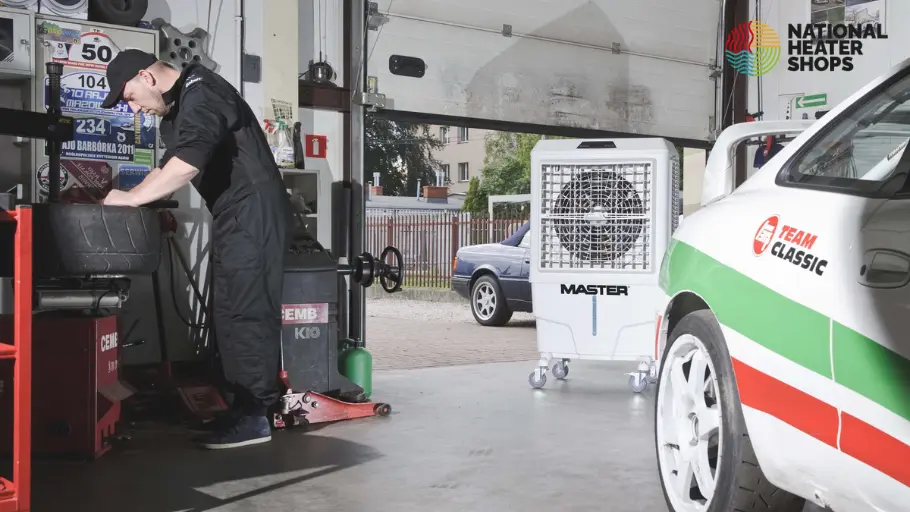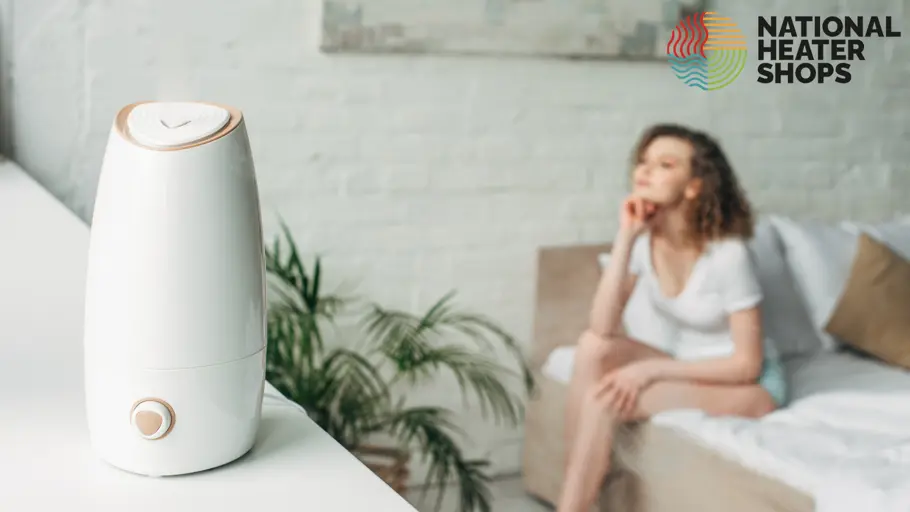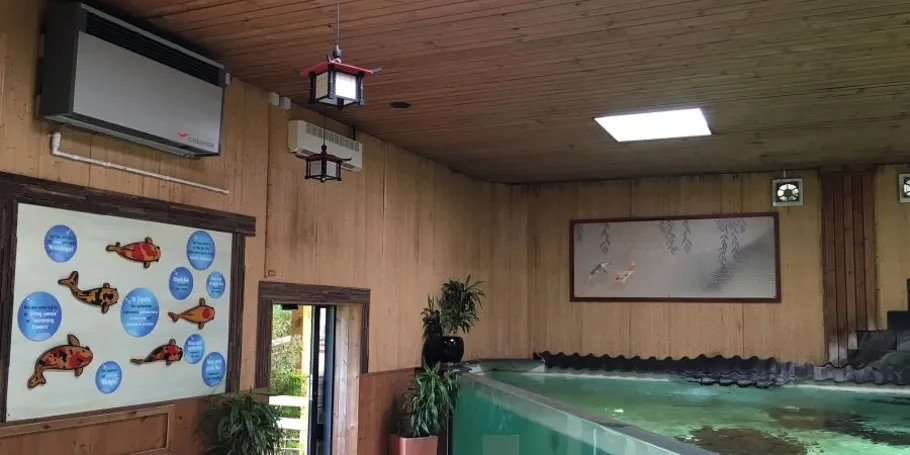As the Earth's temperature continues to increase, the demand for eco-friendly alternatives is growing. Evaporative coolers, also known as swamp coolers, are considered more environmentally friendly than traditional air conditioners for a number of reasons.
One of the foremost reasons is that evaporative coolers use far less electricity, which has a major impact on reducing global warming. Due to lower energy consumption, an evaporative air cooler also contributes to fewer greenhouse gas emissions.
Unlike traditional cooling methods that rely on energy-intensive processes, evaporative coolers use the natural magic of water and air. They get rid of the need for refrigerants that are bad for the environment. As a result, their impact on the environment is considerably lower. This is the start of a greener, more eco-friendly way to control the temperature.
Let's get to know more about how evaporative cooling works, and you will understand better how good it is for the environment!
What is an evaporative cooler?
Evaporative air coolers are cost-effective and cheap to run. This cooling solution boasts a design that embraces simplicity, highlighting its efficiency and user friendliness. They are fairly simple machines that use the natural process of evaporation to circulate cool air around a space.
In general, they come with four essential components. There is an internal water tank that serves as the reservoir for the cooling process, and a water pump ensures a regulated flow of water onto the cooling pads. The pads are specially designed to encourage optimal water evaporation. Being strategically placed in the path of incoming warm air, they create the ideal conditions for the evaporation process to take place, drawing heat from the air and causing it to cool down significantly.
Along with the cooling pads, a fan is a very important part of getting the air that has been cooled to the right place. They work together to make a steady stream of cool air flow out into the room. This lowers the room's temperature and makes it a more comfortable place to live or work.
Unlike most air conditioning systems, swamp coolers use water as their main way to cool the air. These coolers are different because they don't need refrigerants, which are known for being bad for the environment. Evaporative coolers are a greener way to cool because they don't use these potentially dangerous chemicals.
The fact that they use water to cool themselves fits perfectly with ideas of sustainability. Since water is a renewable resource, evaporative coolers are a long-term solution that is good for the environment. This unique feature shows how much they care about the environment and opens the door to a more environmentally friendly way to cool.
How do evaporative coolers work?
To create a cooler atmosphere within a room, an evaporative air cooler uses the cooling effect that results from the natural process of evaporation. This cooling process commences as the cooler pumps water from the water tank up to the top of the unit, where it flows back down and through the cooling pads. As this happens, the internal fan draws warm or hot air into the machine. Then the indoor air passes through the wet cooling pads, which act as a heat exchanger in the evaporation process.
As the air moves through the wet cooling pads, tiny droplets of water are released into the air, where they evaporate and turn into vapour. The temperature of the air reduces during this phase of change, creating a cooling effect that makes people feel better. The internal fan then blows the cooler air out of the front of the machine to cool the space.
Where should an evaporative cooler be used?
Evaporative air conditioners cool the air via water evaporation and produce a stream of refreshingly cold air. Evaporative air coolers are best used in low-humidity, well-ventilated areas. In a space with high humidity, their cooling efficiency can be significantly reduced since the incoming air already contains a substantial amount of moisture.
Think twice before using an evaporative cooler in a small, enclosed room without proper ventilation. Water evaporates less effectively if the space is poorly ventilated. Condensation can often build up inside the space over time, limiting the evaporative cooling potential. The lack of airflow not only hinders its effectiveness, but also potentially leads to uncomfortable condensation buildup. Therefore, it is best to have windows or doors open while using one of these machines inside a space.
The versatility of evaporative coolers makes them suitable for various indoor and outdoor environments. Their ability to provide efficient cooling in both residential and commercial settings makes them a popular choice for a wide range of applications. Furthermore, their portability allows for easy installation and relocation, making them a convenient cooling solution for different spaces.
Evaporative coolers present a versatile cooling solution that finds its applicability across a wide spectrum of settings. Their adaptability is evident in various indoor environments, making them suitable for residential havens as well as the hospitality industry, including hotels, where the presence of a fresh air supply enhances their efficiency.
They can also be used in a lot more places than just homes and hotels. These portable cooling systems bring their coolness to places like shops, making it easier for people to shop in comfort. They provide a welcome coolness to restaurants and bars of all kinds, making it a nice place for customers to enjoy their food and drinks. In places that are always changing, like tents, gazebos and gyms, evaporative coolers still manage to keep the air cool and comfortable, even during the busiest events or hardest workouts.
The coolers show their power in industrial and commercial applications by keeping warehouses and factories at a comfortable temperature so that staff and workers can work comfortably. The amazing thing about evaporative cooling is that it can be used outside as well as inside. For instance, evaporative cooling can refresh bar and restaurant terraces.
In what situations should an evaporative cooler not be used?
When deciding where to put an evaporative cooler, it's important to be careful and use good judgement. In particular, don't use an evaporative cooler in rooms with sensitive equipment or materials that could be damaged by higher humidity levels. Server rooms, which are full of complicated electronic systems and sensitive data, are great examples of these kinds of places.
When keeping the right level of humidity is the most important thing, traditional air conditioning systems might be a better choice for controlling the temperature. These air conditioners not only keep the temperature just right, but they also keep the humidity level stable, which keeps sensitive equipment safe and makes sure it works well. By making this wise decision, you can confidently protect the delicate balance required by specialised equipment and materials, ensuring their long-lasting performance.
The benefits of evaporative cooling
Evaporative coolers play a crucial role in enhancing indoor air quality by introducing moisture into the environment. They add moisture to the air, which can help improve indoor air quality and reduce the risk of respiratory problems such as allergies and asthma. By effectively increasing humidity levels, evaporative coolers help alleviate the discomfort often associated with excessively dry air.
Apart from their higher energy efficiency in comparison to traditional air conditioners, swamp coolers also contribute to environmental sustainability by generating less electronic waste during manufacturing and disposal. Their simple design incorporates fewer electronic components than conventional air conditioners, which not only leads to decreased electricity bills but also lowers your upfront purchase costs.
Opting for an evaporative cooler not only reduces electronic waste but also supports energy conservation, making it a cost-effective and eco-friendly cooling solution to address global warming. Since they use natural cooling methods, they contribute to fewer greenhouse gas emissions. This helps reduce the overall carbon footprint associated with cooling homes and buildings.
Evaporative coolers available online
We have a wide range of evaporative coolers available to buy online. With a streamlined design that trims down electronic components and significantly cuts electricity costs, our evaporative coolers offer not only budget-friendly benefits but also align with your dedication to a sustainable environment.
Our range includes small and medium sized evaporative air coolers tailored for home and household applications. Masterkool iKOOL-50 Plus Portable Evaporative Cooler is perfect for cooling homes, offices and spaces up to 25m². Its 26-litre water tank is perfect for prolonged use without the need for constant refilling, allowing for 7 to 11 hours of continuous usage.
We also offer expansive alternatives designed for commercial settings such as restaurants, bar terraces, events, and gazebos. Our range also extends to industrial use, catering to spaces like warehouses, workshops, hangars, and beyond. Elite BCE45 Evaporative Bio Cooler produces a cooling effect of 4°C to 12°C, which is perfect for cooling commercial and industrial spaces up to 50m². It has a built-in 45-litre water tank, which is great for long-term use because you don't have to keep filling it up. It lets you feel the coolness for as long as you can.
Join us in redefining cooling technology and embracing a greener choice that positively impacts your wallet and the planet. View the full range of evaporative coolers on our website and pick your favourite type of evaporative cooler today!








